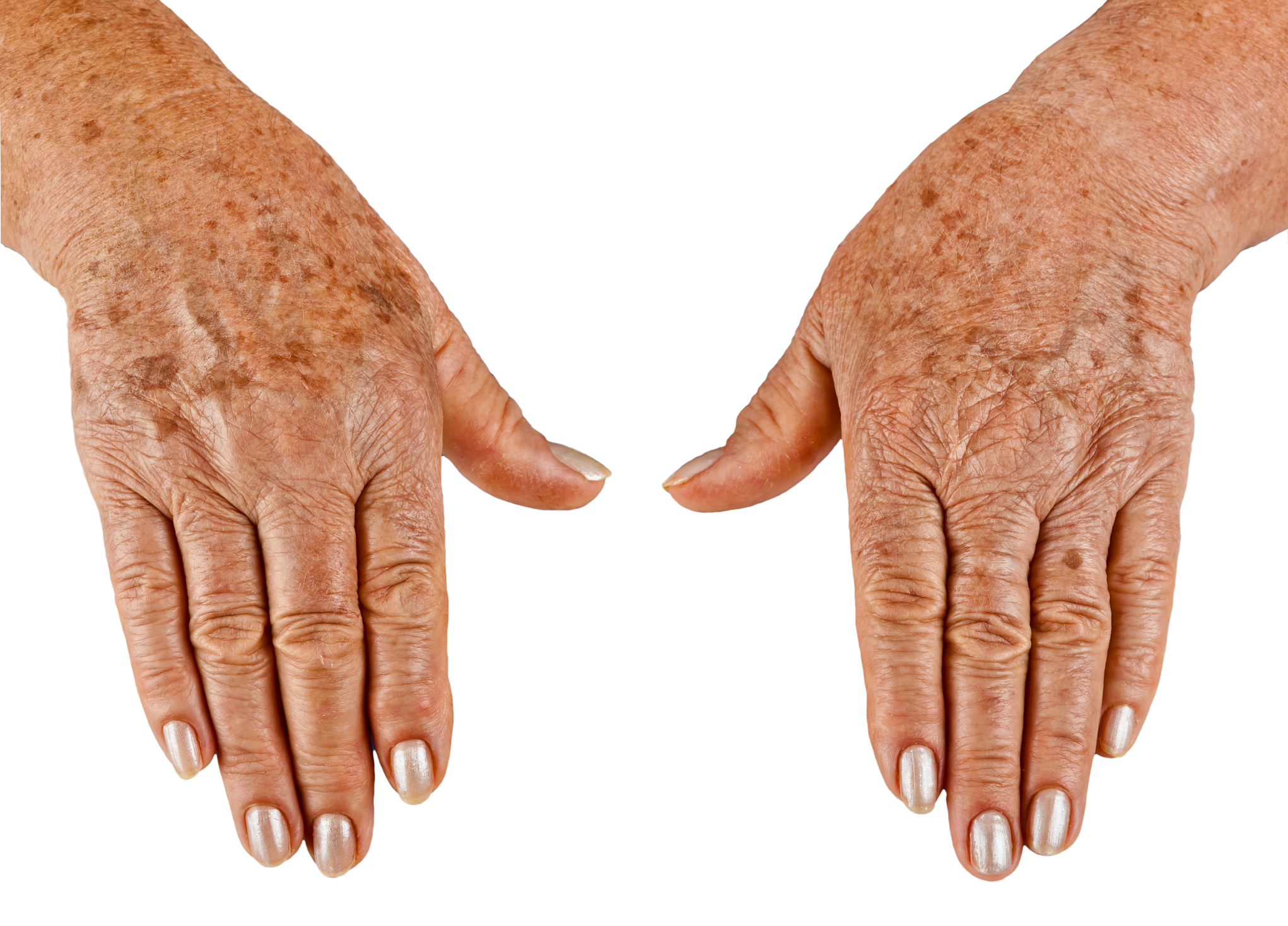With warmer summer days and more exposure to the sun’s rays, many adults over the age of 50 may be noticing some hyperpigmentation of the skin on their face, shoulders, chest, or hands. Sunspots or “age spots” are very common among older adults and although they don’t require medical treatment, they can be cosmetically lightened.
Age spots, sometimes called liver spots or solar lentigines, are caused by sun exposure and are an attempt by the skin to protect itself from more sun damage. Using sunscreen regularly, and wearing a wide-brimmed hat and light-colored loose-fitted clothing in the sun can help prevent dark spots from forming.
Age spots are more common among people with fair skin but they don’t fade on their own without sun exposure like freckles. According to the Mayo Clinic, sunspots are flat, oval areas of increased pigmentation and are usually tan to dark brown in color. Age spots don’t require medical care but should you find spots that are black or have changed in appearance, have your doctor take a look.
Signs of Melanoma – When to see a doctor
- If a spot is black
- Has increased in size
- Has an irregular border
- Has an unusual combination of colors
- If a spot is bleeding
Using commercial tanning beds or lamps can also cause age spots resulting from overactive pigment cells. Exposure to ultraviolet light speeds up the production of melanin, the natural pigment that gives skin its color. Age spots may appear with years of sun exposure when melanin is produced in high concentrations or when pigment is clumped together.
The sun’s rays are strongest between 10 a.m. and 2 p.m. – try to plan outdoor activities before or after these hours and be sure to cover up with appropriate clothing, hats, and sunscreen. Don’t forget to keep drinking water throughout the day during hot weather.
If you are at all concerned about new or unusual spots on the skin, visit your doctor who will perform a visual inspection and if warranted, a skin biopsy to rule out any types of skin cancer. Patients may be prescribed a topical cream, laser therapy, or freezing to lighten normal age spots to destroy the extra pigment. Dermabrasion, microdermabrasion, and chemical peels can also help lighten dark light spots but always talk to a dermatologist before undertaking any of these procedures and use an SPF of 30 and protective clothing following any of these treatments. For more information follow this link to the Canadian Cancer Society.






Add Your Voice
0 Comments
Join the Discussion